Hello sweet friends! Today we have a fun DIY. For the upcoming Napoleon and Josephine Valentine Tea, I have made some Miniature Pincushion Party Favors. They will act as small thank you gifts for the two speakers providing Regency/Empire themed presentations. In addition, they will serve as name cards/seat reservations for the Maîtresse de thé (Mistress of Tea) I have assigned to each table. These lovely ladies will assist me at each table to ensure the teapots are never empty.
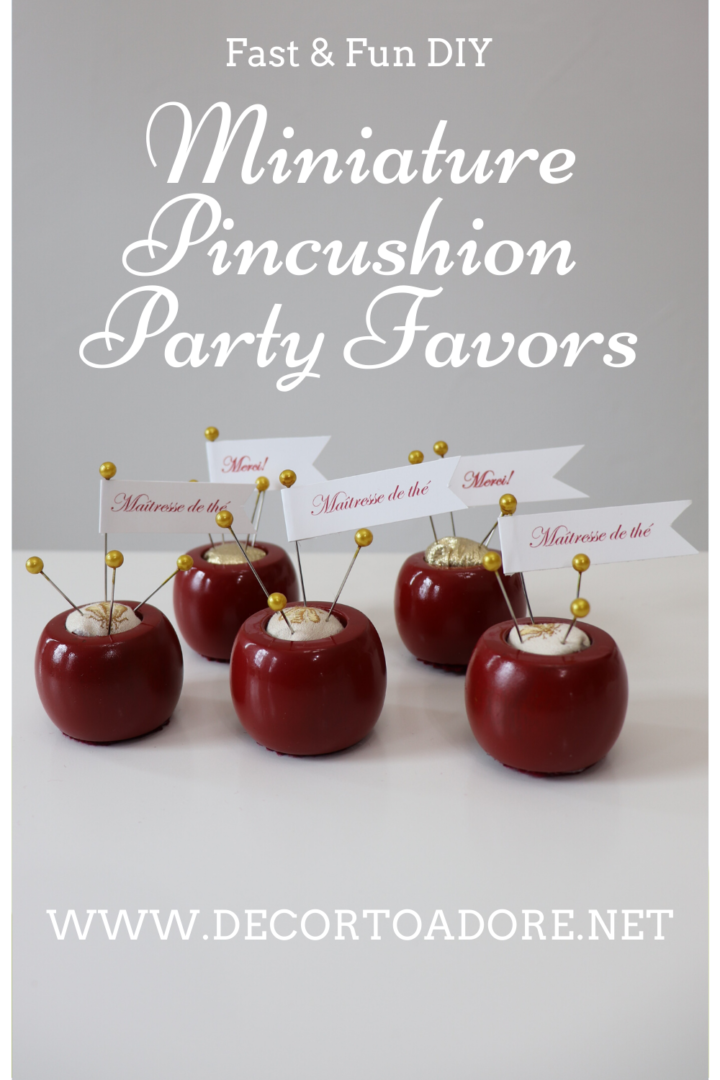
Miniature Pincushion Party Favors
The best part of this easy DIY is that it repurposes a number of items.
Materials and Tool Needed
- Wide napkin rings (I used some vintage wooden ones from the thrift store.)
- Wool scraps
- Corsage or sewing pins
- Fabric scraps ( I used gold lame and Kravet Medici in ivory.)
- Scissors or pinking shears
- Poly fil
- Glue ( I used hot glue but fabric glue would work too.)
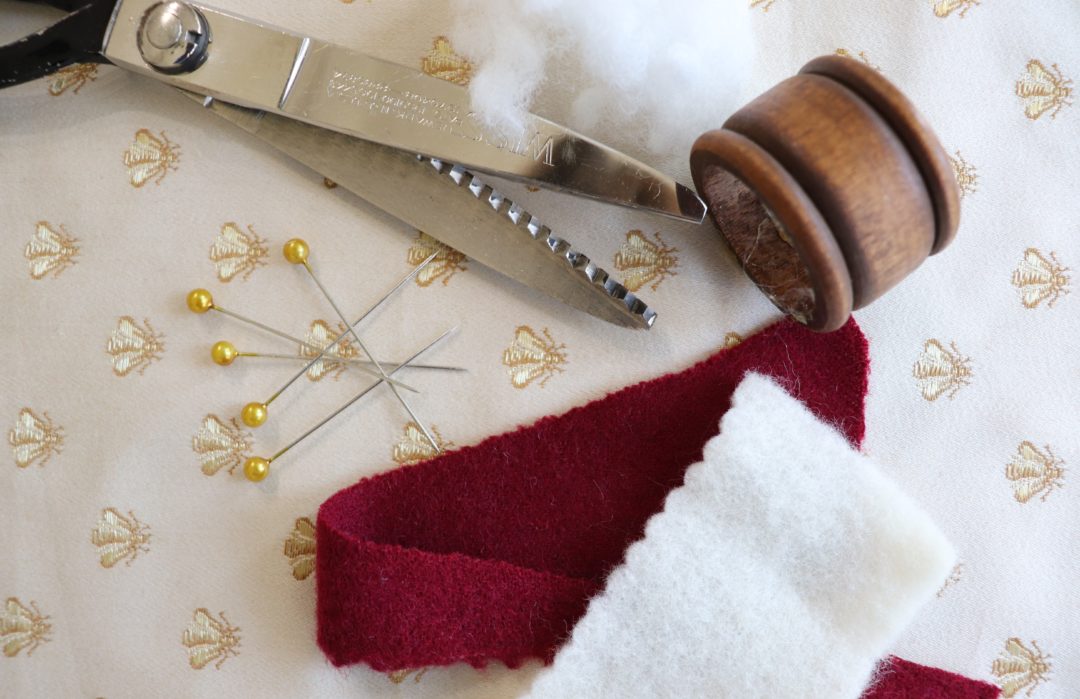
Step One
If you would like a specific color, spray paint the napkin rings.
If you find colored napkin rings in your party palette or love the natural wood look you can skip past this step.
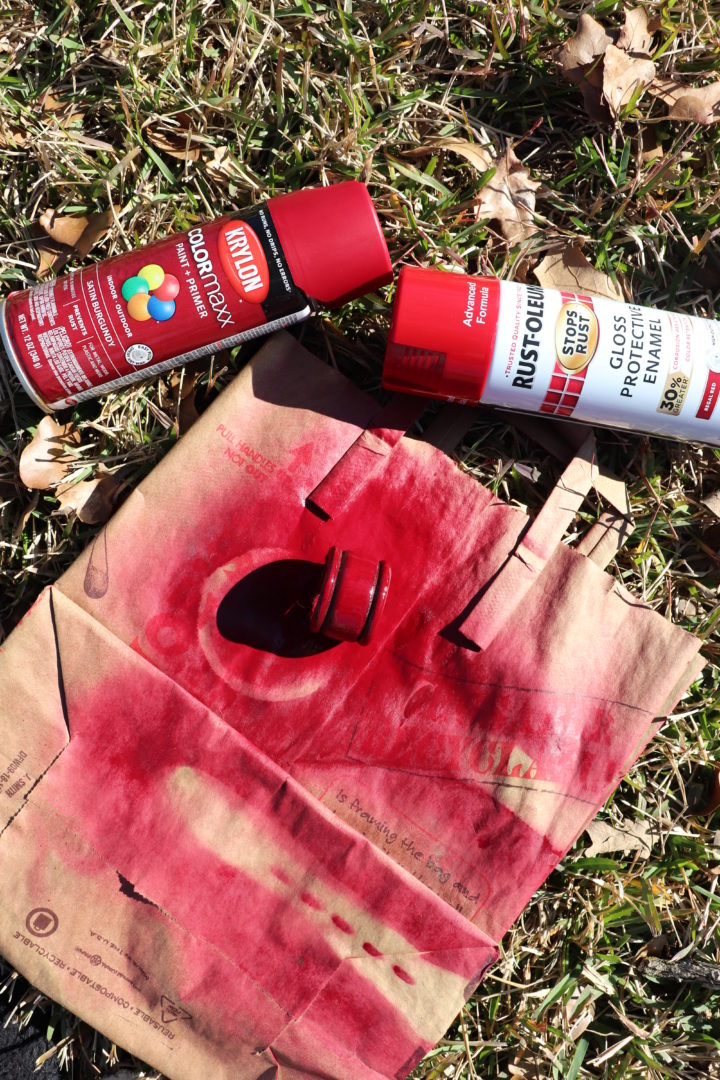
Step Two
Trace around the interior and exterior of the napkin ring onto the wool.
Wool is used as the wool’s natural lanolin helps to keep pins/needles smooth, sharp and rust-free!
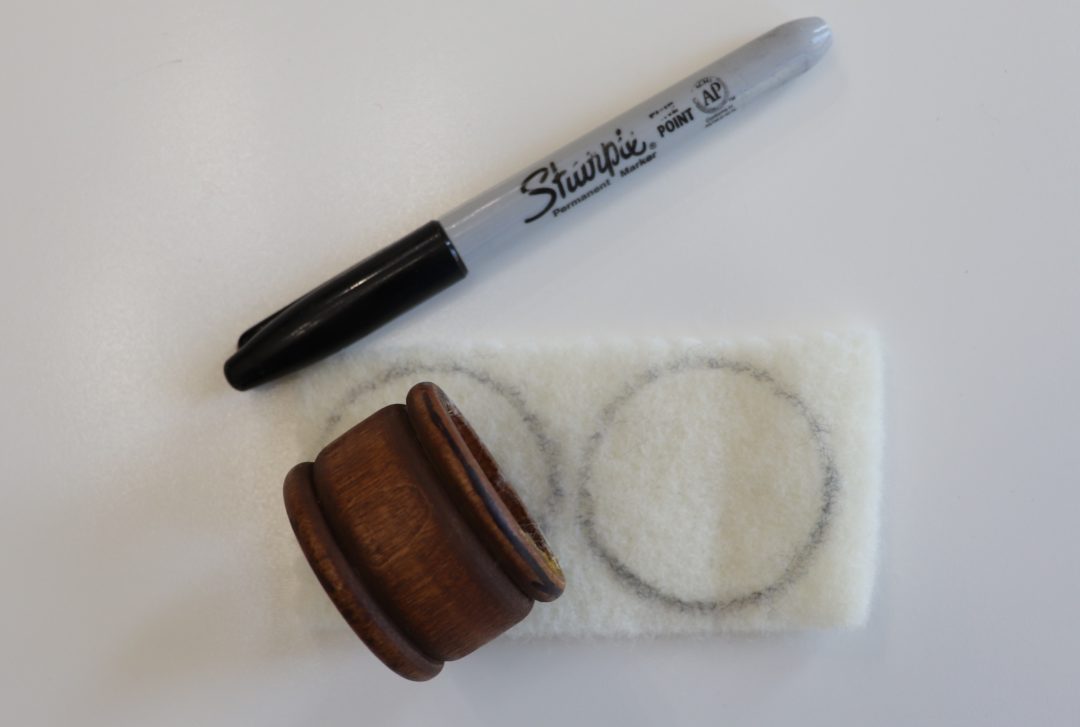
You will need one interior sized circle of wool and one exterior sized circle of wool per pincushion.
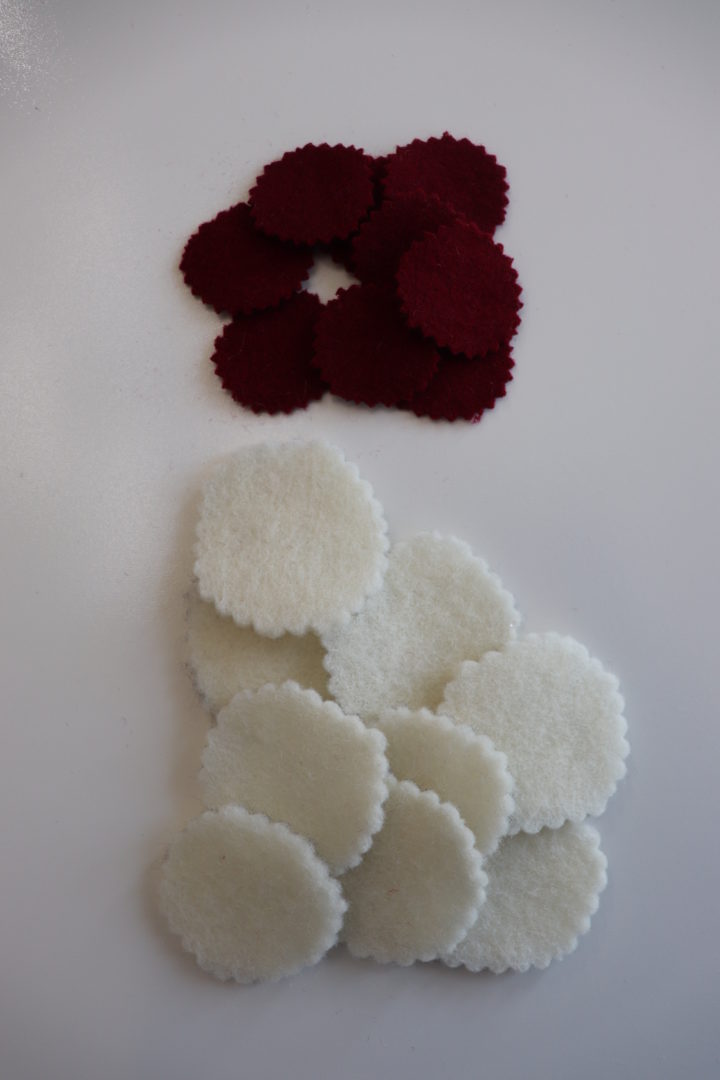
Step Three
Cut out fabric squares.
Mine measured 3 x 3 but size will be adjusted depending on the napkin ring size.
F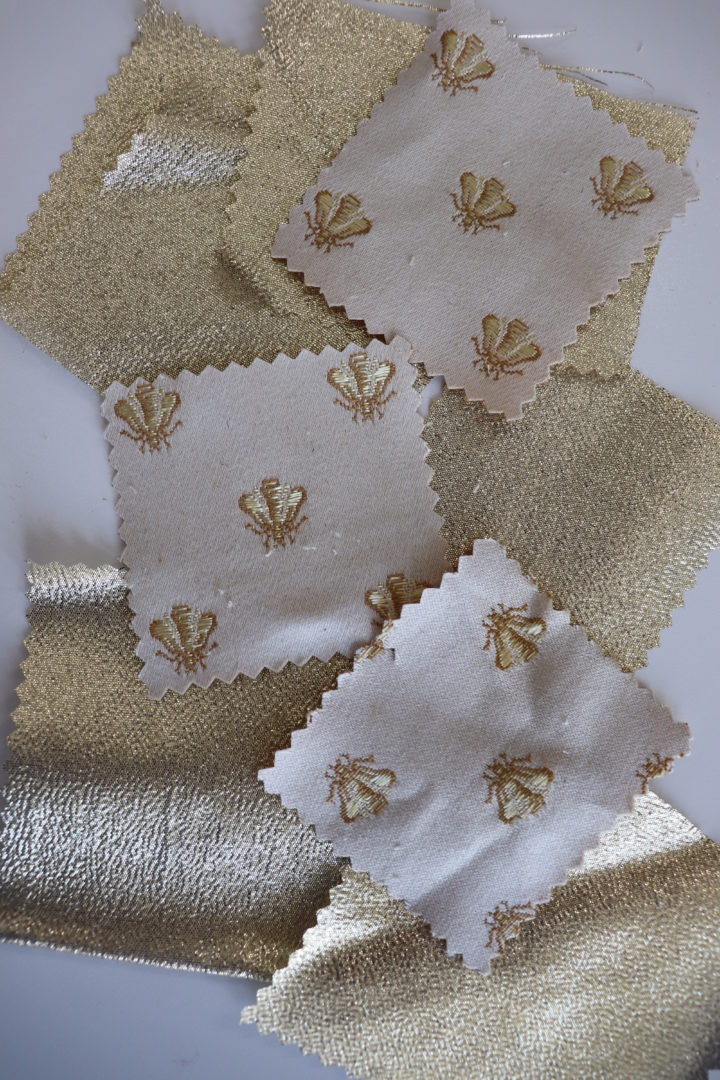
Napoleon and the BEE Symbol
FUN FACT: it’s fairly well known that Napoleon used the honey bee as an important symbol of the power and prestige of his empire.
But he was not the first to do so.
The symbol was also used by Childeric I, a Frankish leader in the northern part of imperial Roman Gaul and a member of the Merovingian dynasty.
The bee also appears on the coat of arms of the Holy Roman Emperor, Ferdinand I.
The Barberini family was among Rome’s greatest patrons of the arts. The family reached the height of its power in the 17th century when Cardinal Maffeo Barberini became Pope Urban VIII. The family’s coat of arms is three bees in a V-formation, and they decorate buildings and paintings all over the city of Rome.
Napoleon was born on Corsica on August 15, 1769. His birth was just 15 months after France had purchased the island from the Italian city-state of Genoa. So while he was ethnically of Italian-Corsican descent his nationality was French. The bee symbol possibly paid tribute to this.
Close up of bee symbol from Napoleon’s coronation robe.
Now back to our regularly scheduled programming.
Step Four
Place fabric right side down. Top with a larger wool circle. Add a bit of poly-fil.
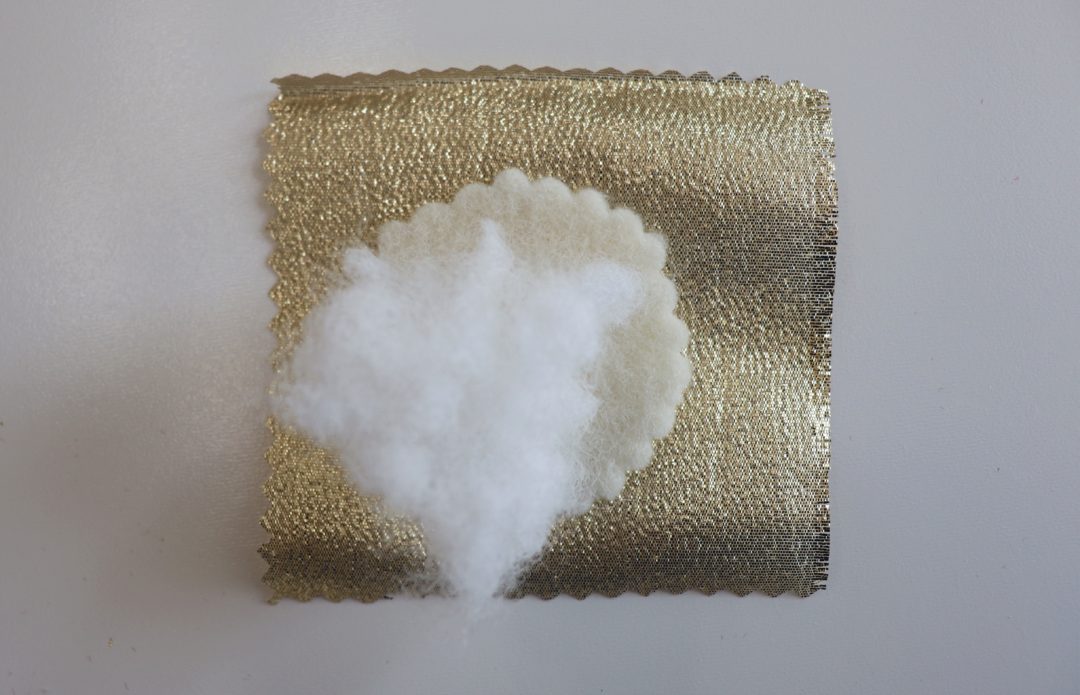
Step Five
Add a dab of glue to the center and bring up the fabric on either side.
It will look like a fabric cannoli. (Smile.)
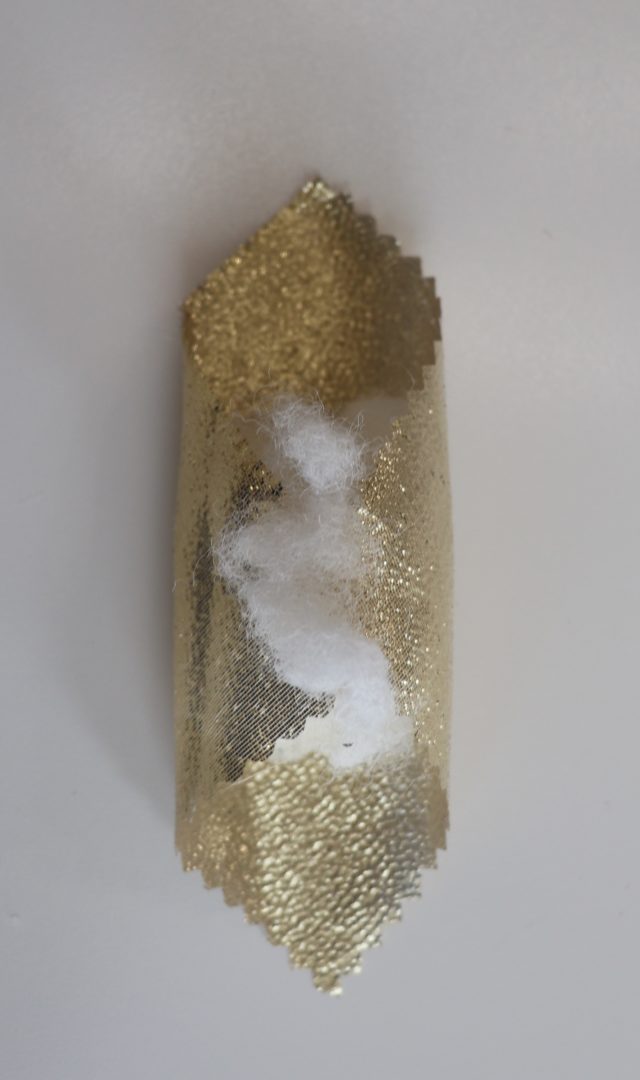
Bring the remaining edges to the center and glue down. You now have a fluffy fabric ravioli.
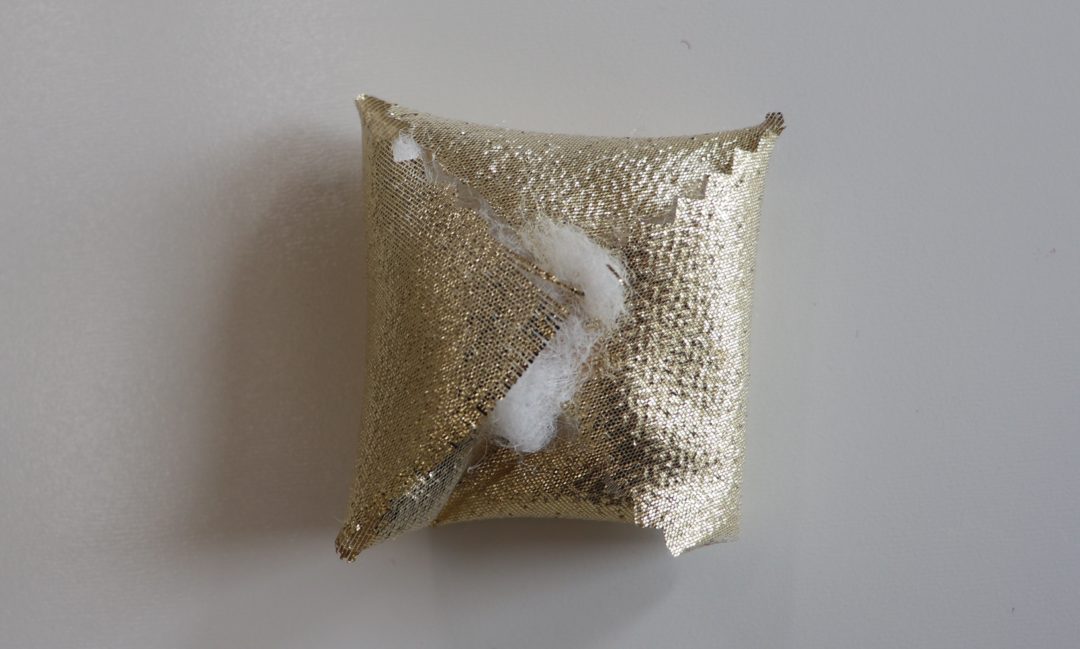
Step Six
Carefully push the fabric into the napkin ring.
Add a drop of glue along the interior side to secure.
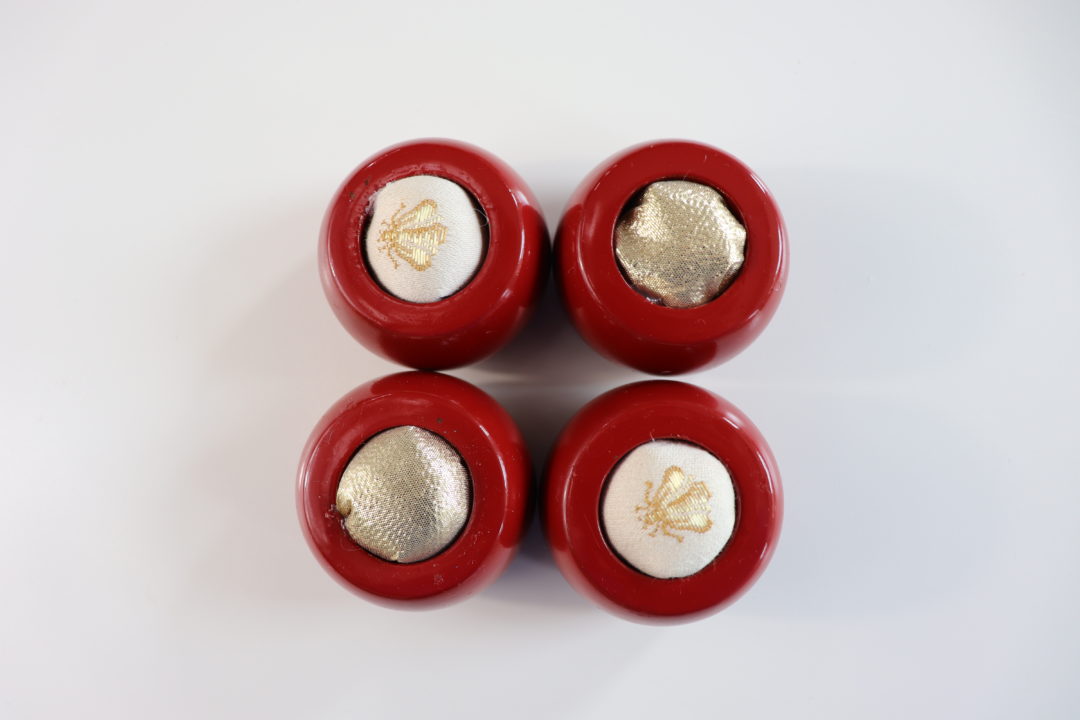
Step Seven
Flip the napkin ring over and add a bit more poly-fil if needed.
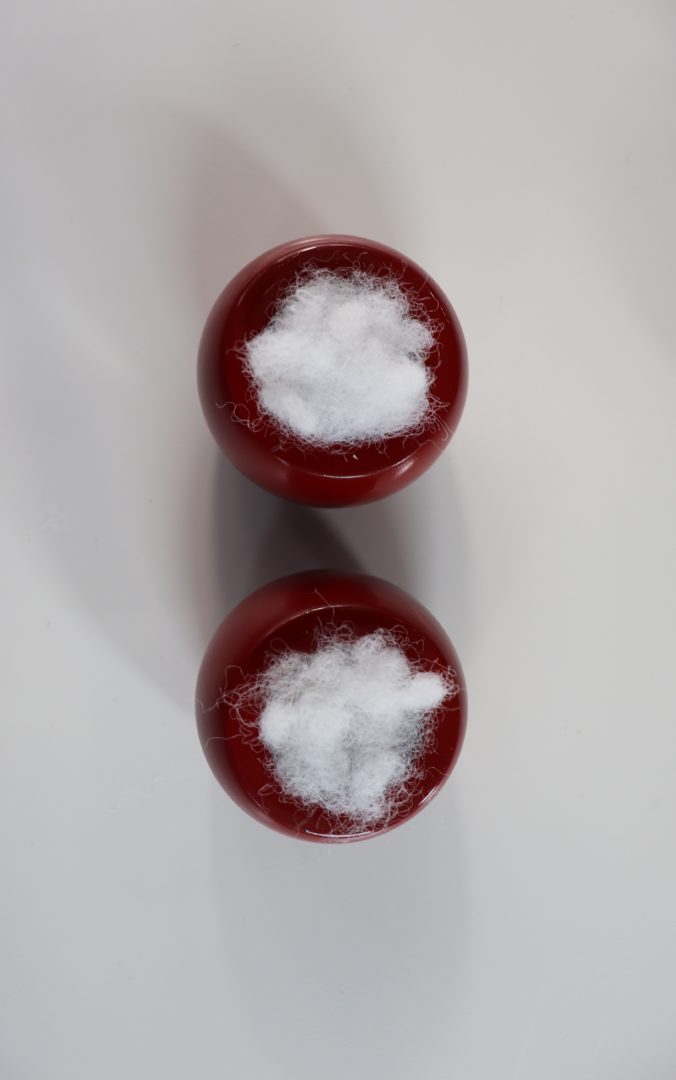
Apply a thin bead of glue and cover the bottom with the second piece of wool.
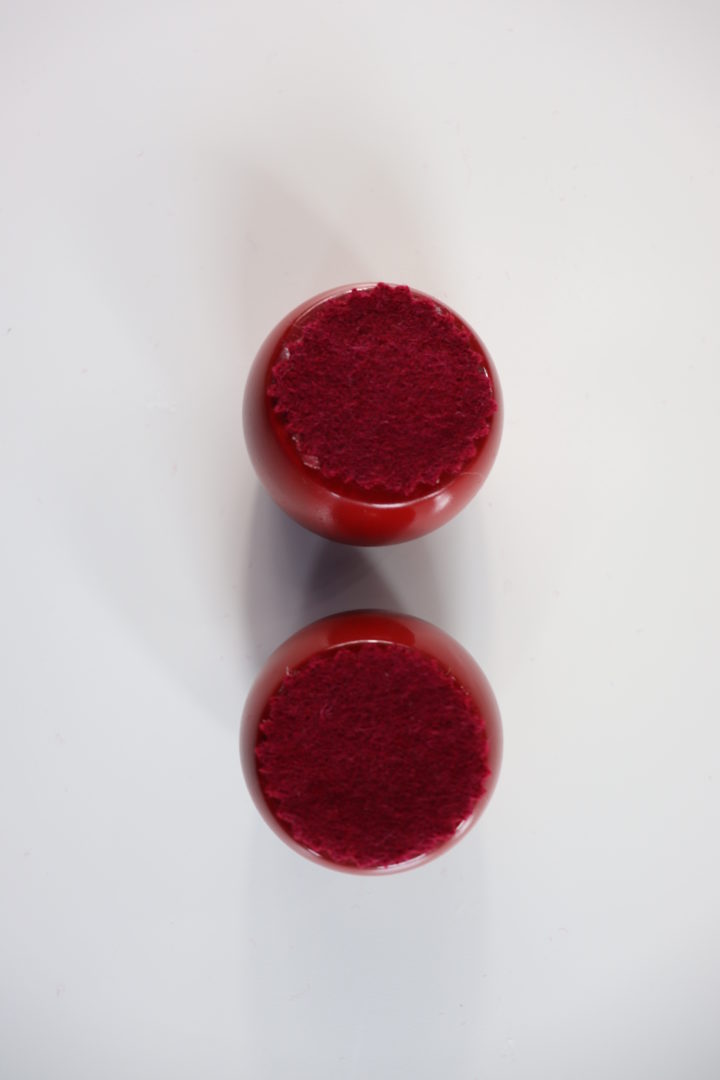
Ta-Da!
Add in a few corsage pins and a few fun tags if desired.
Mine read:
Maîtresse de thé (Mistress of Tea)
Merci!
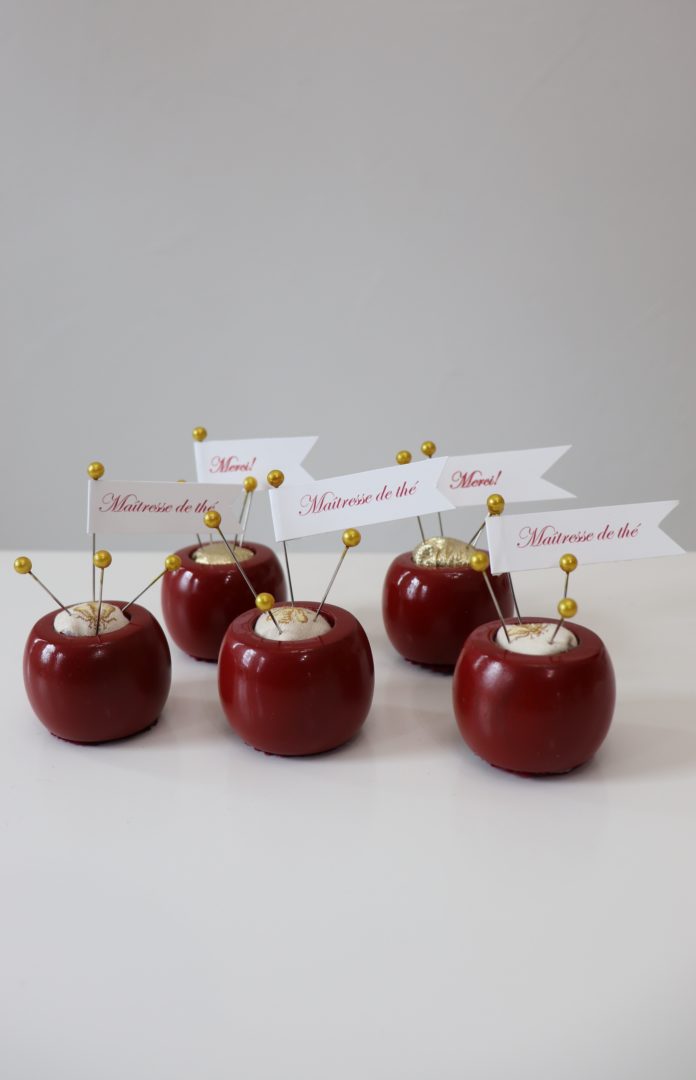
I think it’s a perfect party favor for the seamstresses in attendance.
See you Friday!
Laura
Once again your idea is one I will use. I have everything needed for this mini pin cushion. I do a fund raiser luncheon each year each for our YWCA . I plan to incorporate your idea in next year’s theme.
What a unique idea. Everyone who sews, even just a bit, needs a fun pin cushion. Thanks for the idea.
Those are lovely, Laura!
These are so perfect for your costume group — talk about a targeted thank you/party gift. Your instructions are clear and excellent, Laura. They’ll adore them!
Excellent! and bees!